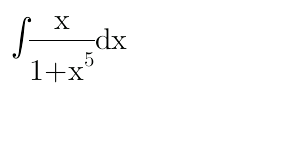
AllQuestion and Answers: Page 1809
Question Number 29162 Answers: 0 Comments: 1
Question Number 29161 Answers: 1 Comments: 1
Question Number 29149 Answers: 1 Comments: 0
Question Number 29148 Answers: 0 Comments: 1
Question Number 29140 Answers: 0 Comments: 6
Question Number 29138 Answers: 0 Comments: 4
Question Number 29134 Answers: 0 Comments: 3

Question Number 29131 Answers: 1 Comments: 2
Question Number 29136 Answers: 0 Comments: 1

Question Number 29144 Answers: 1 Comments: 0
Question Number 29159 Answers: 0 Comments: 1
Question Number 29158 Answers: 0 Comments: 1
Question Number 29157 Answers: 1 Comments: 1
Question Number 29156 Answers: 0 Comments: 2
Question Number 29123 Answers: 0 Comments: 0

Question Number 29118 Answers: 1 Comments: 6

Question Number 29116 Answers: 1 Comments: 0
Question Number 29111 Answers: 1 Comments: 1
Question Number 29107 Answers: 1 Comments: 1

Question Number 29105 Answers: 0 Comments: 2
Question Number 29080 Answers: 2 Comments: 0
Question Number 29079 Answers: 0 Comments: 0
Question Number 29078 Answers: 0 Comments: 2
Question Number 29077 Answers: 0 Comments: 1
Question Number 29076 Answers: 0 Comments: 1
Question Number 29063 Answers: 0 Comments: 0

Pg 1804 Pg 1805 Pg 1806 Pg 1807 Pg 1808 Pg 1809 Pg 1810 Pg 1811 Pg 1812 Pg 1813
